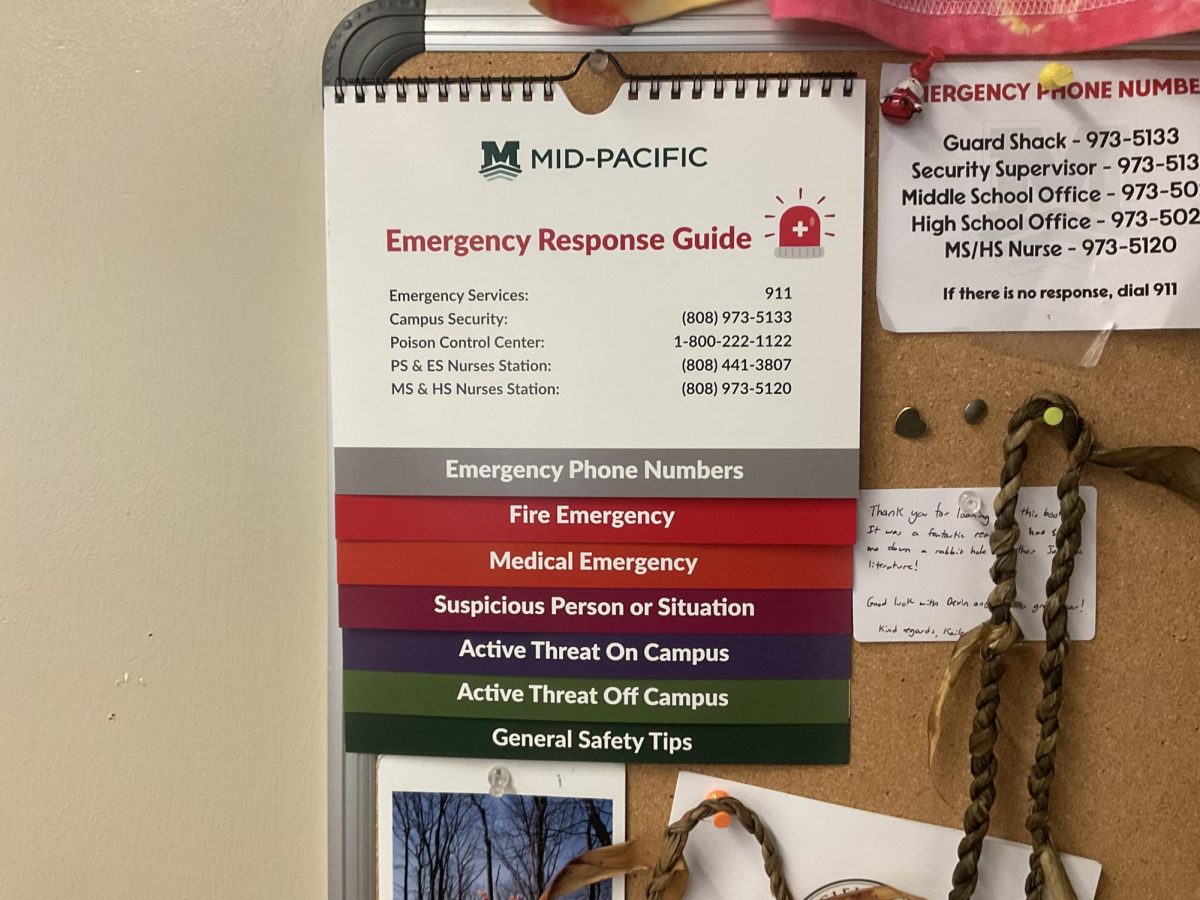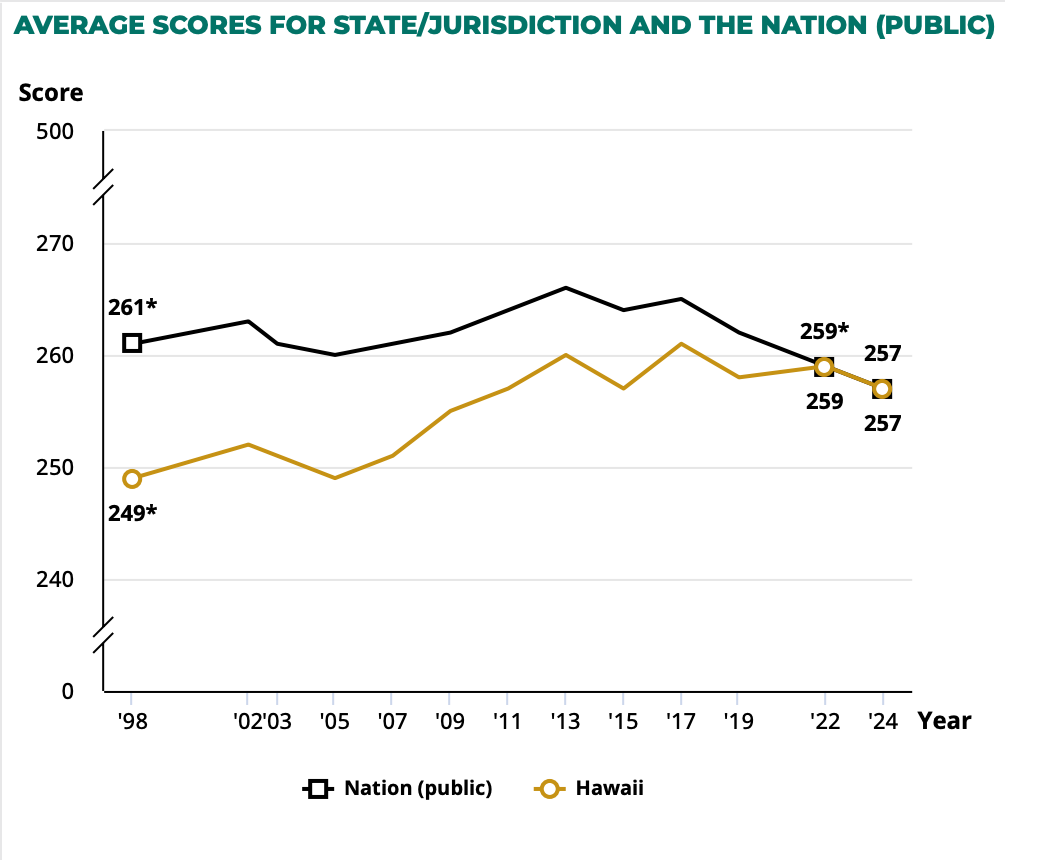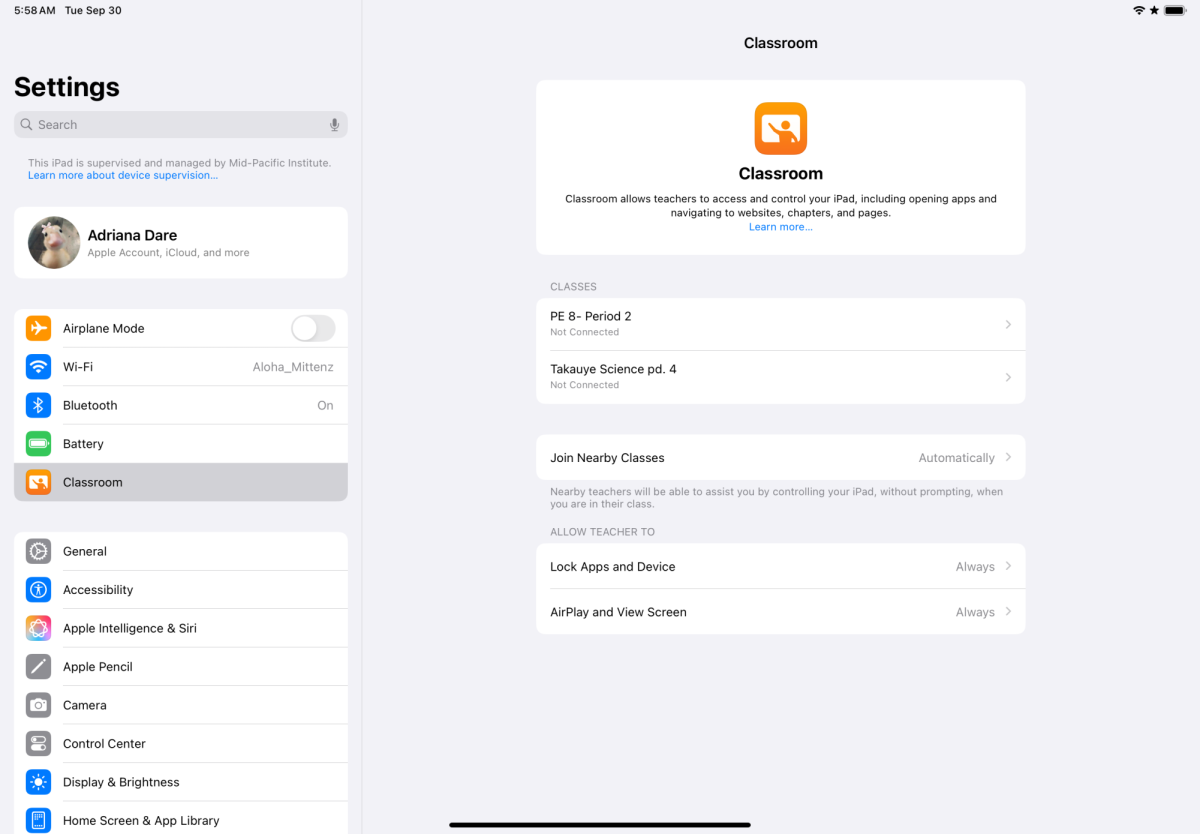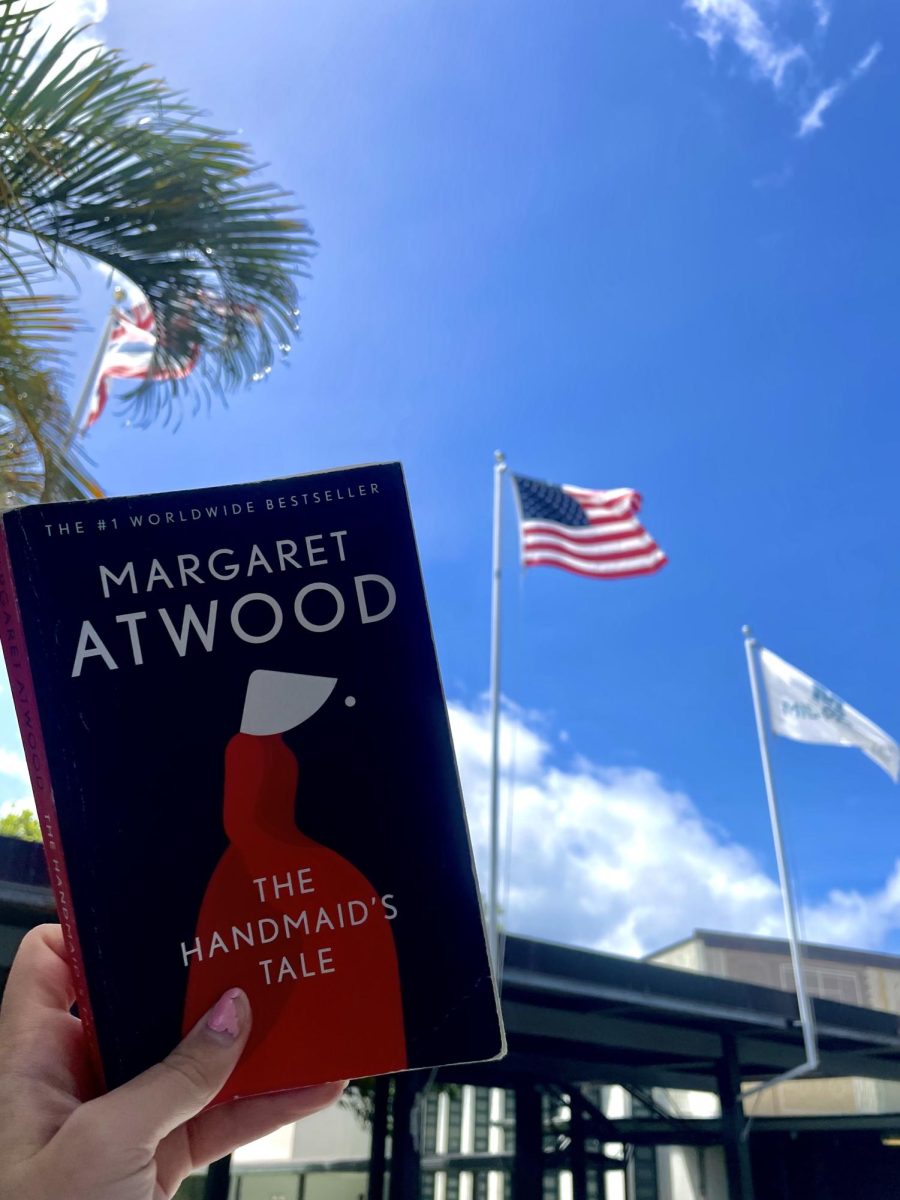Mid-Pacific GPAs are on the rise as seniors pass the 4.0 mark
Mid-Pacific semester GPAs have increased at every grade level during the pandemic.
March 10, 2021
Across the country and the state, reports show that students are failing classes at an unprecedented rate during the global pandemic.
However, at Mid-Pacific, with a message of only focusing on the most essential content, GPA averages rose. During the first semester this school year, the average GPA of a Mid-Pacific senior passed the 4.0 mark, shifting from 3.521 to 4.003, according to data provided from the records office.
The Juniors’ average GPA rose from 3.515 to 3.867, while sophomores rose from 3.221 to 3.618. Freshman saw the lowest increase and lowest GPA overall, rising from 3.318 to 3.562.
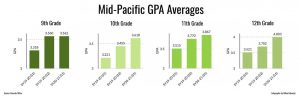
Some students and teachers said they think the increase in GPA could be due to grade inflation. But are students just performing better?
“It’s not that students are doing better,” said Middle and High School Principal Dwayne Priester. “Teachers are just becoming more precise in the way they assess.”
Because the administration’s revised grading policies have eliminated final exams, which were often worth 20 percent of the overall grade, teachers are now focusing on grading smaller pieces of data that reveal an individual’s acquired knowledge, said Priester.
“[Now,] grades more accurately reflect a student’s learning…I don’t see it as grade inflation,” said Priester.
However, teachers may not be covering as much content as last year by focusing on only what is essential.
“We’re not covering as much, we’re just honing in on the most critical pieces of information to be covered,” said Priester.
As teachers rethink the way they assess and cover material with their students, some teachers have turned to open-book testing.
“It’s comforting for students to have access to their notes, but the truth is that it steals time because people are flipping through pages trying to verify something,” said Monica Flores, who is the curriculum and instruction coordinator for the math department.
If students didn’t have access to notes, they would be more focused on problems and move through tests quicker, she said.
“The students that scored the highest said they didn’t even use their notes,” said Flores.
Teachers are designing assessments knowing what’s available, said Flores. They’re testing skills that students can’t just copy from their notes or the internet.
Although teachers are adjusting the way they evaluate students, for some, content coverage remained unchanged.
“The last quarter of last year, I still pushed my students hard,” said Flores. “I covered all of the material that I would normally cover.”
Mid-Pacific’s increase in average student GPA may be in contrast with national and state trends, according to media reports.
For example, The Washington Post recently reported “an unprecedented rise in F’s” in schools across the country. In Maryland, failure rates in Math and English jumped sixfold, while some districts in Houston reported at least half of their students are failing one class, according to the article.
In Hawaii, about 10 percent of public high school students received failing marks in core academic classes, last grading quarter, the Hawaii State Department of Education (HIDEO) data dashboard indicates.
The records office does not calculate the number of failing students, so it is unclear whether or not the school is experiencing similar figures.
The semester average differs from cumulative GPA. Semester average looks at all students during one semester, while cumulative GPA which tracks individual student performance across their high school career.
Only 14 percent of the current seniors have a cumulative GPA of 4.0 or higher, according to the college counseling office.
National data does show some increase in GPA. In 1990, the average GPA was only 2.68. Nineteen years later, the average GPA rose to 3.00, according to a 2009 study by the National Center for Education Statistics (NCES), which is the most recent year available.
Many researchers interpret this rising data as grade inflation. Is this the case for Mid-Pacific?
“At first glance, I wouldn’t be able to answer that question,” said High School Assistant Principal for Academics Christel McGuigan. “What I do know is that teachers are being incredibly responsive to their students’ needs.”
This responsiveness is contributing to better and deeper learning, said McGuigan.
“We should be celebrating that given our circumstances,” said McGuigan.
Despite having to adapt new teaching and grading practices, some teachers have found ways to make grading fair and prevent grade inflation during a pandemic.
“There’s no way that we’ve been taking it easy on students. We are challenging you,” said Flores. “If you have an A in my class, you deserve an A.”
However, Flores said that an A during the pandemic differs from an A during a normal school year.
“The experience would’ve been different because we would’ve done different things. So, might your grade have been higher as a result? It might be, but it might not be because some kids did worse online,” said Flores.
Evidently, not every student has been thriving during the pandemic.
“My grades weren’t as high [online], but coming back in-person brought up my grades because I could speak out and ask questions,” said sophomore Ema Yamashita.
“Performance in virtual learning is different for every student,” said Director of College Counseling Derrick Kang. “Some students can better manage themselves online than others.”
Since the shutdown in March, attendance has been mostly consistent with post pandemic rates at Mid-Pacific, which was not the case at public schools, said Kang.
“Large numbers of public school students didn’t show up or couldn’t,” said Kang. “They didn’t have access to the internet, iPads or laptops.” “Private schools as a whole had more resources,” Kang said, and in turn, less failing marks.
There is such a deep divide between public schools and independent schools, said Kang, and the pandemic has caused learning gaps.
Fortunately for Mid-Pacific, a majority of students will be okay, said Priester.
“I believe the students are in good shape,” he said.
As for the grades, “I wouldn’t be surprised if there’s a little bit of grade inflation because I do think these numbers are very high,” said Kang.



